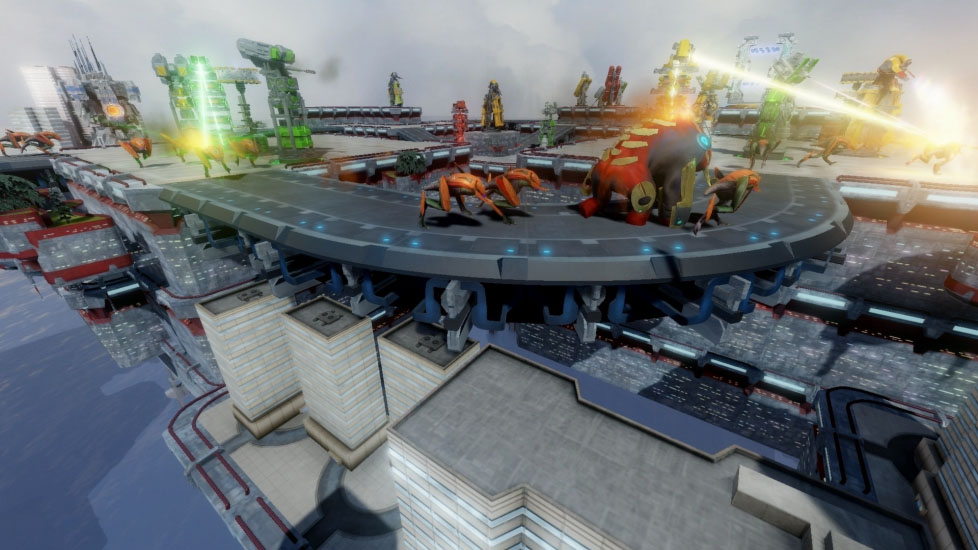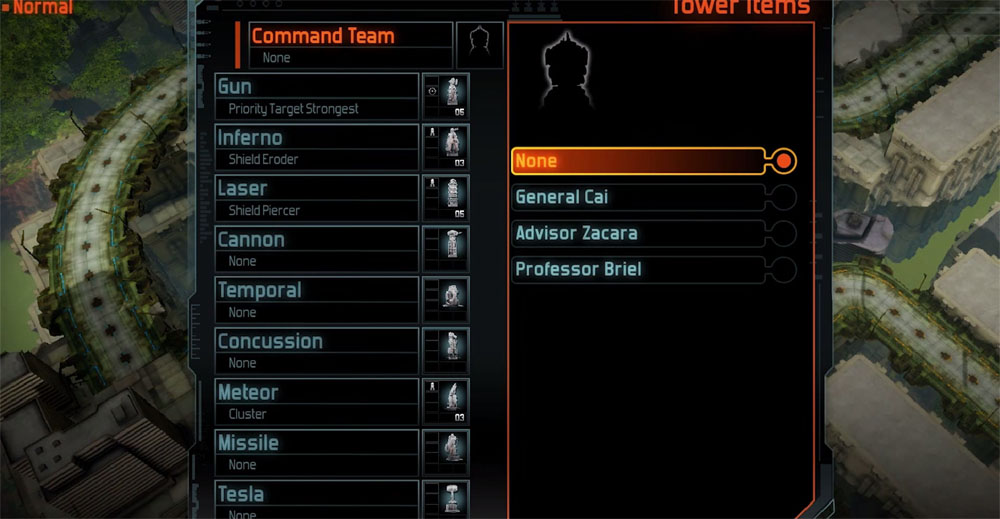While it seems like the boom of Tower Defense games has finally died down a bit, it’s still a solid, well-known game mechanic that’s used in newly released games. Defense Grid 2, the sequel to Defense Grid: the Awakening, brings the franchise to the new consoles and introduces cooperative play. How does it stack up? Let’s find out.
I never played the first Defense Grid, so I can’t really speak to improvements between them and Defense Grid 2. I can say, though, that the amount of features of Defense Grid 2 is pretty impressive for the TD genre. It has 2-player online or local co-op, a story campaign of 20 maps, and a 2-player competitive mode where the creeps players kill go over to the other player’s map. It’s supported on two consoles (the PS4 and Xbox One) as well as PC (Windows and Linux) and Mac. For players who get the game on Steam on computer, they’ll also gain access to the DG Architect where they can build and share levels with the Steam Community. The version I played was the PS4 version, so all of my experiences are based on that version, and I can’t make any comments on the DG Architect.

Local and online co-op work pretty similarly. To play local co-op, one navigates to the Campaign menu and picks a chapter (which is really a map/level). From this demi-lobby area, a second player can join in. Different modes can be selected to change the gameplay experience - I like to think of them as mutations. For example, players could elect to play a chapter and pick the Grinder mode where they have to stave off 100 waves of the same enemy type. One important mode to notice is the DG Coordinated Defense mode. In this mode, each player has a separate score, resource pool, and build areas (the default in campaign mode is shared resources, score, and building areas). So for players who want to feel a little more independent, this is definitely an option to check out. There’s also 4 different difficulties to pick from.
After a chapter is launched, a tower load-out is brought up. Player One can select which tower upgrades each tower will passively have during the chapter. A variety of the towers will be available to build during the level, but there are different passives that towers can be upgraded to have during that particular attempt of the level. These upgrades are unlocked through playing the campaign. One thing that was a bit of a bummer is that in local co-op, it seems like only Player One can select upgrades that both players will have during the chapter. Also of note is the fact that local co-op partners can’t seem to get on the game’s leaderboards for their scores, even in DG Coordinated Defense mode.

Online co-op works pretty similarly, except players get to it through the Multiplayer menu. There are three multiplayer modes currently available: DG Fighter, Co-Op Doubles, and DG Coordinated Defense. DG Fighter is the competitive mode, Co-Op Doubles is shared pools and build areas, and DG Coordinated Defense is again the split pools and build areas. There’s also matchmaking for the multiplayer modes where players can enter a matchmaking queue based on their list of specifications for a game (mode, chapter, difficulty, etc.).
